| Type | Battlecruiser | Hull | Krupp cemented steel |
| Displacement | 25,400 tonnes | Engines | 4 turbines, 85,000shp, Parsons-Vlohm & Voss |
| Length | 186.6 m | Machinery | Steam turbine, 4 shafts |
| Beam | 29.4 m | Speed | 25.5 kts |
| Draught | 9.19 m | Complement | 1,346 |
| Armament | 10x280mm L/50 K, 10x150mm L/45 K, 16x88mm L/45, 4xTT 500mm SK | ||

The Ottoman warship Yavuz started its life as SMS Goeben, part of the Moltke-class battlecruisers of the Imperial German Navy. Commissioned in July 1912, it was named after General August Karl von Goeben, a respected figure from the Franco-Prussian War. Goeben bore resemblance to the earlier German battlecruiser design, but featured larger dimensions, improved armour, and an extra turret accommodating two additional main guns. These enhancements rendered Goeben and its counterpart, SMS Moltke, notably larger and more heavily armoured compared to the ships’ British counterparts.
Goeben, accompanied by SMS Breslau, a light cruiser of the Magdeburg-class commissioned in May 1912, formed the core of the Mittelmeerdivision (Mediterranean Division) of the Imperial German Navy. During the Balkan Wars, this squadron participated in several patrols under the command of Admiral Trummler, who was replaced by Rear Admiral Wilhelm Souchon in October 1913.
When hostilities commenced with the Austro-Hungarian declaration of war on Serbia on 28 July 1914, the squadron was in the Adriatic. The German High Command directed the battlecruisers Goeben and Breslau to either conduct raids in the western Mediterranean to impede the return of French troops from North Africa or attempt to reach German waters in the Atlantic, at the discretion of the squadron commander. Souchon immediately marched into the western Mediterranean to avoid being trapped by an enemy blockade of the Strait of Otranto. After the declaration of war between Germany and France on 3 August, Souchon bombarded the port facilities of Bône and Philippeville in Algeria to delay the embarkation of French North African troops to Europe.
Meanwhile, the British Admiralty, led by First Lord Winston Churchill, had already instructed the British Mediterranean Fleet under Admiral Sir Archibald Berkeley Milne on 1 August to shadow the German squadron and prevent it from disrupting French troop transports from Algeria to France. However, Souchon managed to evade his pursuers by heading to Messina, Sicily, to refuel. From there, much to the surprise of his pursuers, he sailed eastward because the French expected further port bombardment off Africa from Souchon, while the British anticipated a breakout into the Adriatic to the friendly port of Pola in Austria-Hungary. In the meantime, secret orders from German naval officials instructed the squadron commander, to sail to Istanbul, contrary to the Kaiser's directives and without his knowledge.
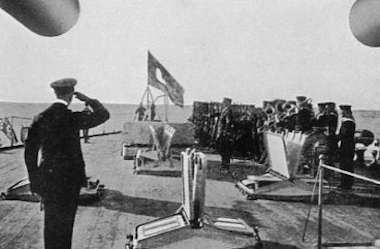
 Goeben and Breslau sailed without difficulty around Greece and through the Aegean Sea, anchoring on 10 August 1914 off the Dardanelles. After several days of diplomatic negotiations between Berlin and Istanbul, the two ships passed through the minefields in the Dardanelles and reached the capital of the Ottoman Empire. There, on 16 August, they were taken over by the Ottoman Navy, an act that soon led to Turkey's entry into the war on the side of the Central Powers. Goeben was renamed Yavuz Sultan Selim (Sultan Selim the Grim), while Breslau became Midilli (Mytilini, after the city on Lesbos lost to Greece in 1913). The ships continued to operate with their German crews, who now wore the fez as their official headgear.
Goeben and Breslau sailed without difficulty around Greece and through the Aegean Sea, anchoring on 10 August 1914 off the Dardanelles. After several days of diplomatic negotiations between Berlin and Istanbul, the two ships passed through the minefields in the Dardanelles and reached the capital of the Ottoman Empire. There, on 16 August, they were taken over by the Ottoman Navy, an act that soon led to Turkey's entry into the war on the side of the Central Powers. Goeben was renamed Yavuz Sultan Selim (Sultan Selim the Grim), while Breslau became Midilli (Mytilini, after the city on Lesbos lost to Greece in 1913). The ships continued to operate with their German crews, who now wore the fez as their official headgear.
The arrival of the Goeben and the Breslau in Istanbul and their transfer to the Ottoman Navy were crucial factors in Turkey's entry into the war. This move effectively blocked the best sea route used by France and Britain for transporting war materials to Russia and Russian wheat abroad. As a result, Russia was largely cut off from the outside world, except for challenging routes such as the Arctic route to Archangelsk, the route through Persia with limited capacity, and the long route via Vladivostok and the Pacific.
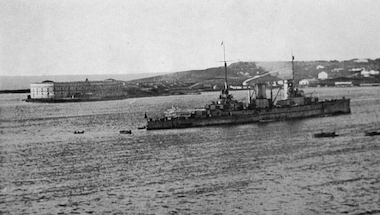
Yavuz and Midilli continued operations, entering the waters of the Black Sea. On 28 October 1914, Yavuz led a sortie into the Black Sea and began raiding Russian assets. The next day the Crimean port of Sevastopol was bombarded. Odessa was also attacked, resulting in the Russian declaration of war on the Ottoman Empire.
Yavuz's subsequent engagements in the Black Sea included encounters with the Russian Black Sea Fleet and participation in escort missions and bombardments. On 18 November, she fought a number of Russian battleships and suffered a hit from a 12-inch (305 mm) shell, killing 13 and wounding three crew. Yavuz bombarded Batumi on 10 December, and on 26 December, she struck two mines at the entrance to the Bosphorus, taking on about 2,000 tons of water. The damage put her out of action for a couple of months.
Despite sustaining damage from mines, Yavuz remained operational, with temporary repairs allowing continued service. The dynamics in the Black Sea changed by late 1915 with the introduction of two new Russian battleships, which posed a challenge to Yavuz. Despite this, Yavuz under the command of Admiral Souchon, managed to avoid significant confrontations and continued its operations cautiously.
The dynamics in the Black Sea changed by late 1915 with the introduction of two new Russian battleships, which posed a challenge to Yavuz. The warship participated in several operations during the year, including covering the withdrawal of other ships and bombarding enemy positions. The ship underwent repair work until May 1915. In April, with repairs still ongoing, Yavuz and Midilli attempted to cover the withdrawal of other Turkish ships but had to abort the mission due to strong currents. Yavuz engaged Russian forces off Sevastopol, evading a torpedo attack, and returned to the Bosphorus safely.
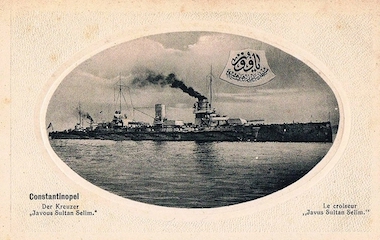
In April and May, Yavuz made unsuccessful attempts to bombard Allied troops at Gallipoli due to British naval presence. Later, Yavuz engaged in operations off Sevastopol and was hit twice by Russian fire but sustained no serious damage. In July, Midilli struck a mine and Yavuz took over escort duties for coal convoys. In August, Yavuz escorted a coal convoy and evaded submarine attacks. The ship continued escort missions until November when the convoy system was suspended due to the threat of submarine attacks.
In early July 1916, during another attempt to bombard Russian ports and after shelling the harbour at Tuapse, Yavuz again encountered a superior Russian force which included Imperatritsa Ekaterina Velikaya, but due to mistakes of Russian commanders, she managed to escape. The appearance of superior Russian battleships heavily curtailed further operations of Yavuz in the Black Sea. In January 1917, Yavuz engaged the same battleship again, this time without any hits scored. The ship also participated in operations to support Turkish counterattacks against Russian advances.
In 1917, Yavuz's operations were further limited due to coal shortages, and the ship was docked for repairs to her propeller shafts until September. Operations were suspended through 1917 due to the coal shortage. After an armistice between Russia and the Ottoman Empire was signed in December 1917, coal supplies started to arrive again from eastern Turkey.
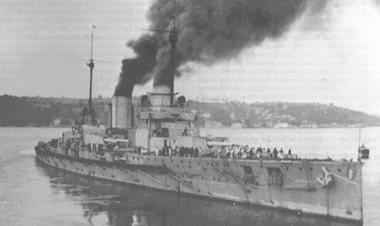
On 20 January 1918, Yavuz together with Midilli emerged from the Dardanelles and encountered the British ships near the island of Imbros. They managed to outgun the British destroyers and monitors, but ran into a minefield. Midilli sank immediately, but Yavuz, which struck three mines and was badly holed, managed to struggle back to the Dardanelles where she beached at the Narrows. The British made repeated attempts to bomb her but she survived and after being refloated on 26 January, she returned to Istanbul. Although attacked by British bombers and a monitor, Yavuz was ultimately towed to safety by the ex-German pre-dreadnought Turgut Reis.
Extensive repair work was needed, lasting from 7 August to 19 October. During this time, Yavuz escorted the Ottoman Armistice Commission to Odessa and underwent maintenance in Sevastopol. Despite plans for internment operations in Novorossiysk, Yavuz was ultimately laid up for the remainder of the war.
Although the Treaty of Sèvres stipulated that Yavuz was to be handed over to the Royal Navy as war reparations, this did not occur due to the outbreak of the Turkish War of Independence. Following the victory of modern Turkey, the Treaty of Lausanne was signed in 1923, allowing Turkey to retain possession of Yavuz and much of its fleet. During the 1920s, refurbishing Yavuz as part of efforts to modernize Turkey's fleet was a consistent goal despite various challenges.
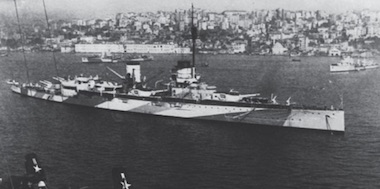
Initially neglected and unable to navigate, the battlecruiser underwent a comprehensive overhaul from 1927 to 1930, with delays caused by technical issues and bureaucratic processes. In 1927, the Flender-Werke delivered a new floating dock to the newly established Gölcük Naval Shipyard with a capacity of 26,000 tons, allowing for Yavuz's permanent repair. The French shipyard Chantiers de l’Atlantique was contracted for the three-year refurbishment, marred by accidents and corruption scandals. Initially opposed to further fleet expansion, Marshal Fevzi Çakmak, the Chief of Staff, changed course after Greece conducted large naval exercises near Turkey's border in 1928. The refit included repairs to mine damage, enhancements to her displacement and equipment, and the addition of new boilers and fire control systems.
Recommissioned in 1930, Yavuz resumed her role as the Turkish Navy's flagship, exhibiting impressive performance during trials. Politicians used the ship for diplomatic purposes in 1933 and 1934, and in 1936, its name was changed to TCG Yavuz (TCG Türkiye Cumhuriyeti Gemisi: Turkish Republic Ship). In 1938, it transported the remains of the founder of the Republic of Turkey, Mustafa Kemal Atatürk, who passed away on 10 November. The ship participated in various diplomatic events, including hosting the USS Missouri in 1946. In 1952, Turkey joined NATO, and the ship was designated B70. It was decommissioned in 1950 and considered for sale or preservation. Ultimately scrapped in 1973, after the West German government declined an opportunity to repurchase it from Turkey, Yavuz stood as the last surviving vessel constructed by the Imperial German Navy and held the distinction of being the longest-serving dreadnought-type ship in any navy. Its legacy was honoured in 1987 with the naming of a new ship, F240 Yavuz, by the Turkish Navy.
![]()
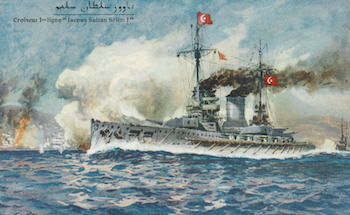
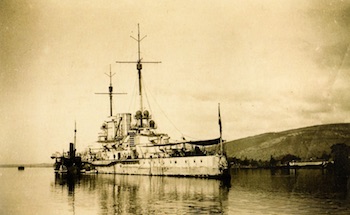
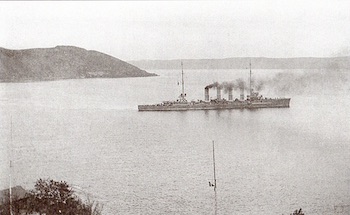
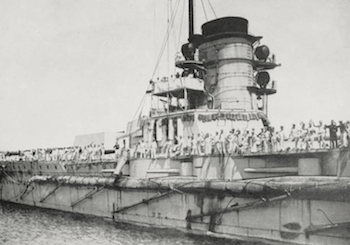
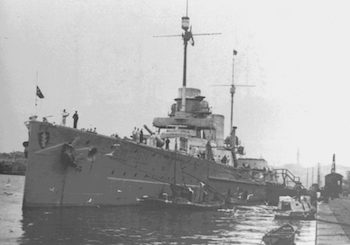
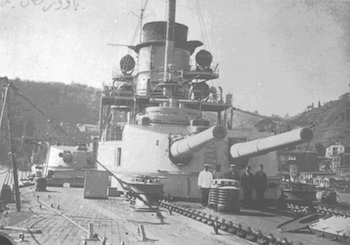
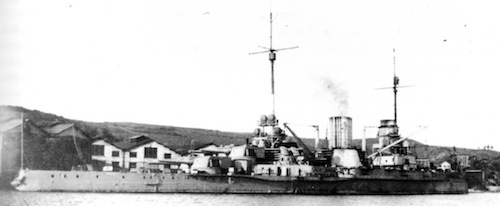
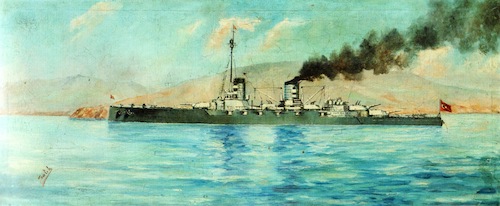
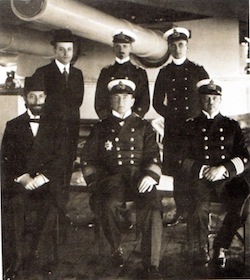
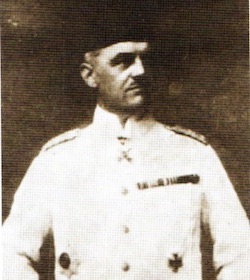
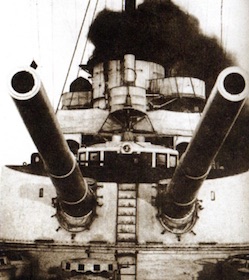
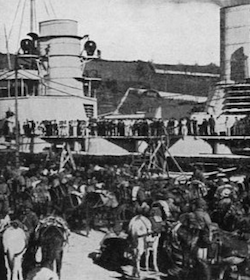
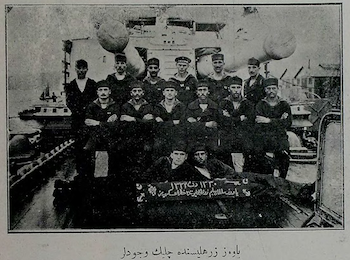
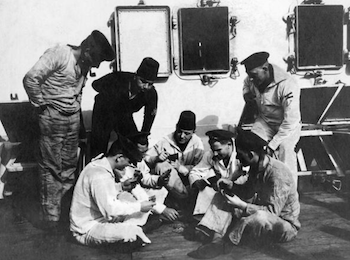
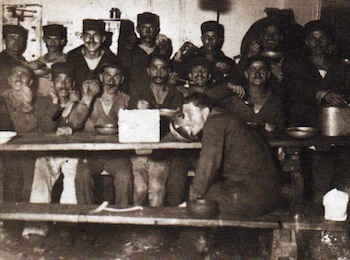
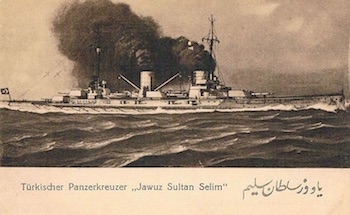
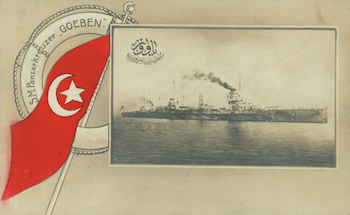
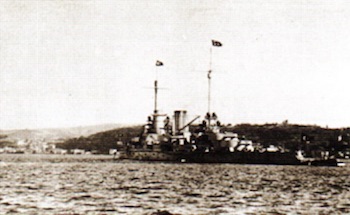
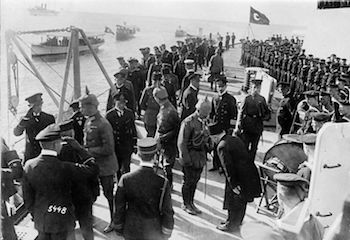
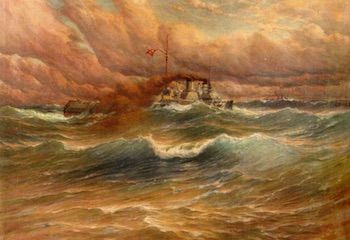
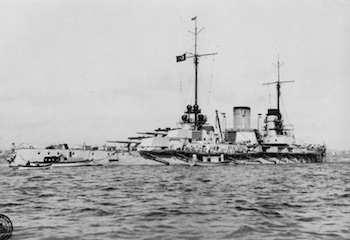
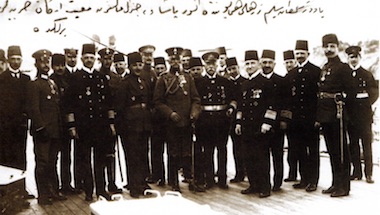
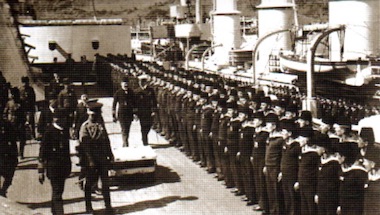
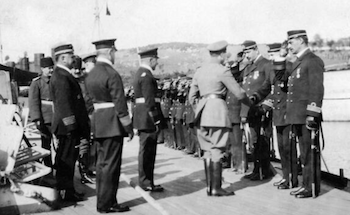
PAGE LAST UPDATED ON 18 FEBRUARY 2024